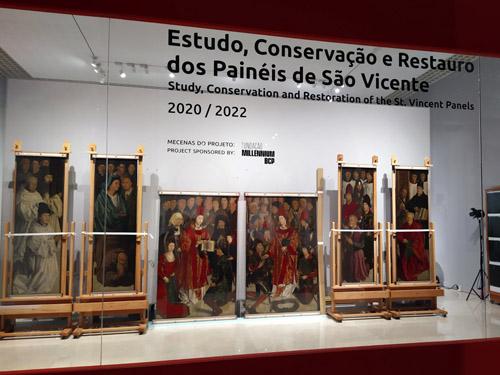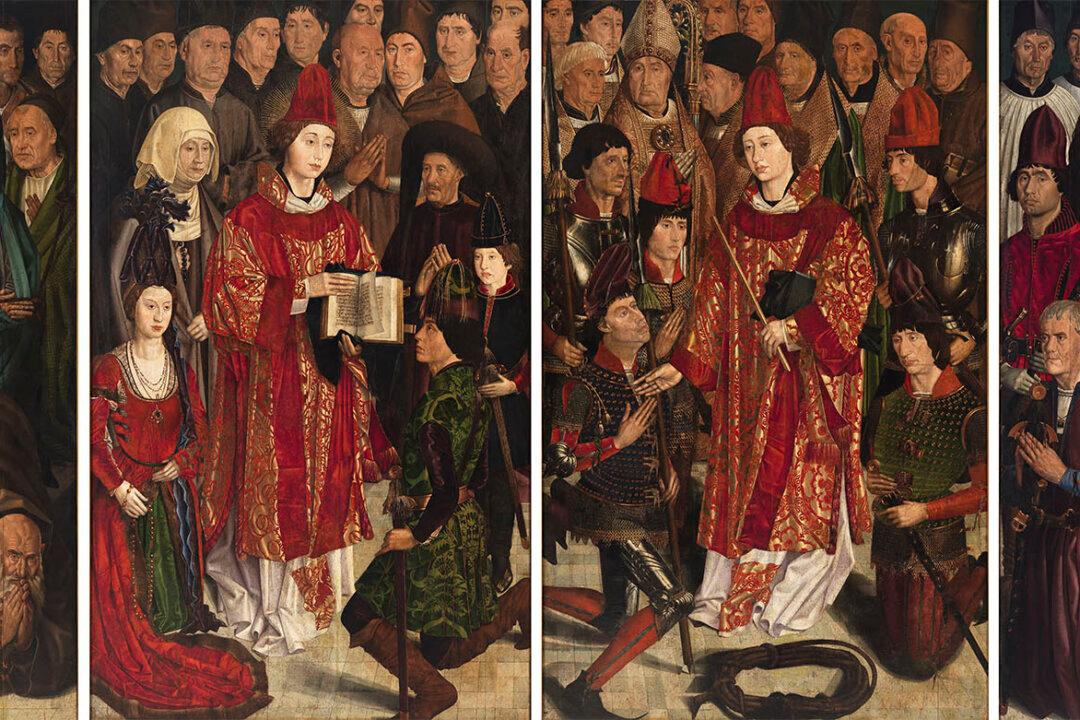As visitors look through a glass window, restorers work diligently to preserve one of Portugal’s national treasures. Paints, microscopes, X-ray machines, trays, tools, computers, frames, and tables fill the space, all set up to do this important work.

The "St. Vincent Panels" under restoration at the National Antique Art Museum of Lisbon. Courtesy of National Antique Art Museum in Lisbon






